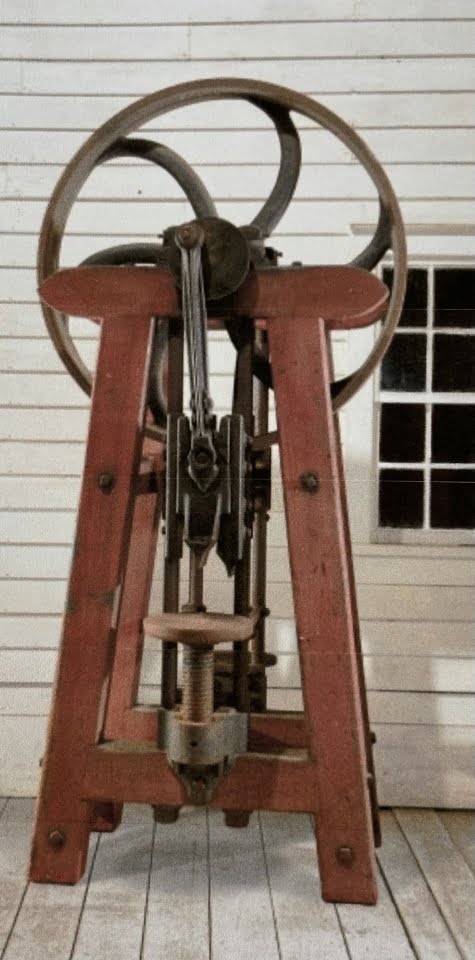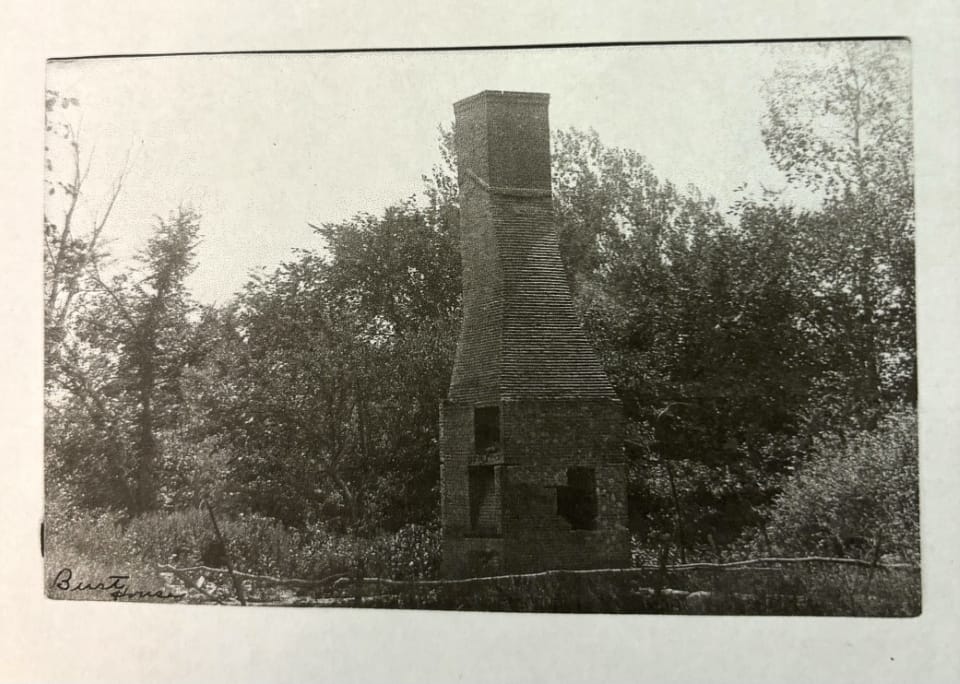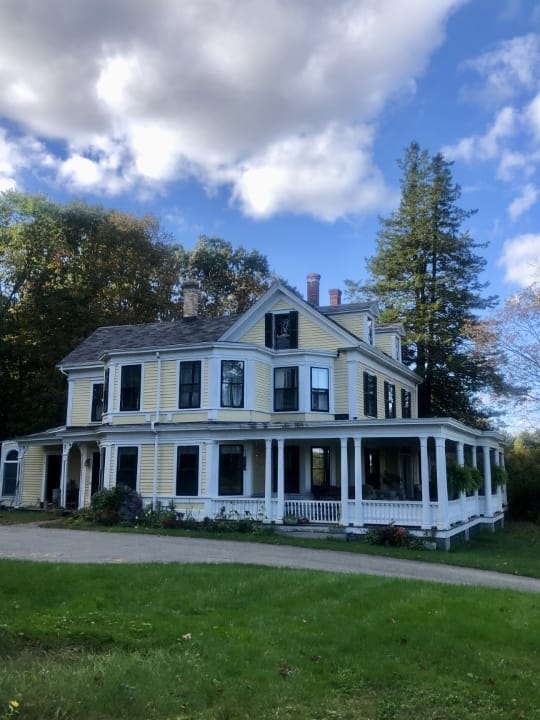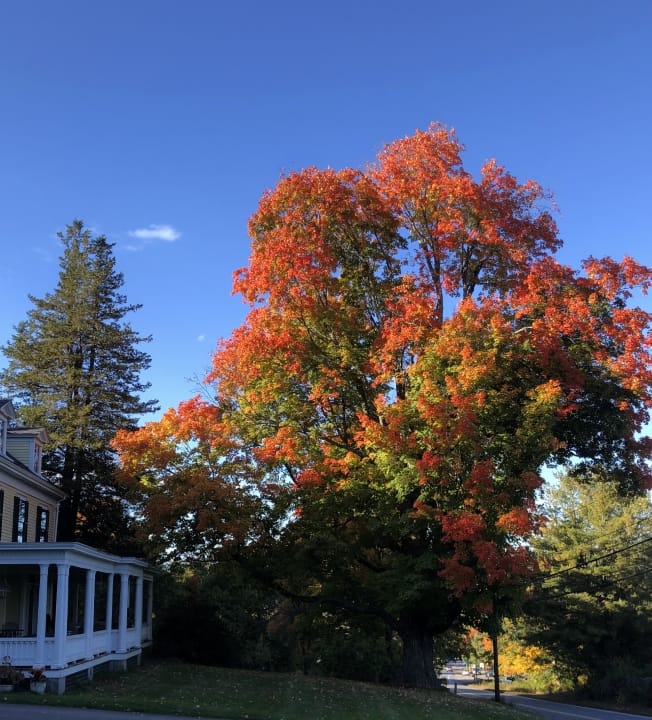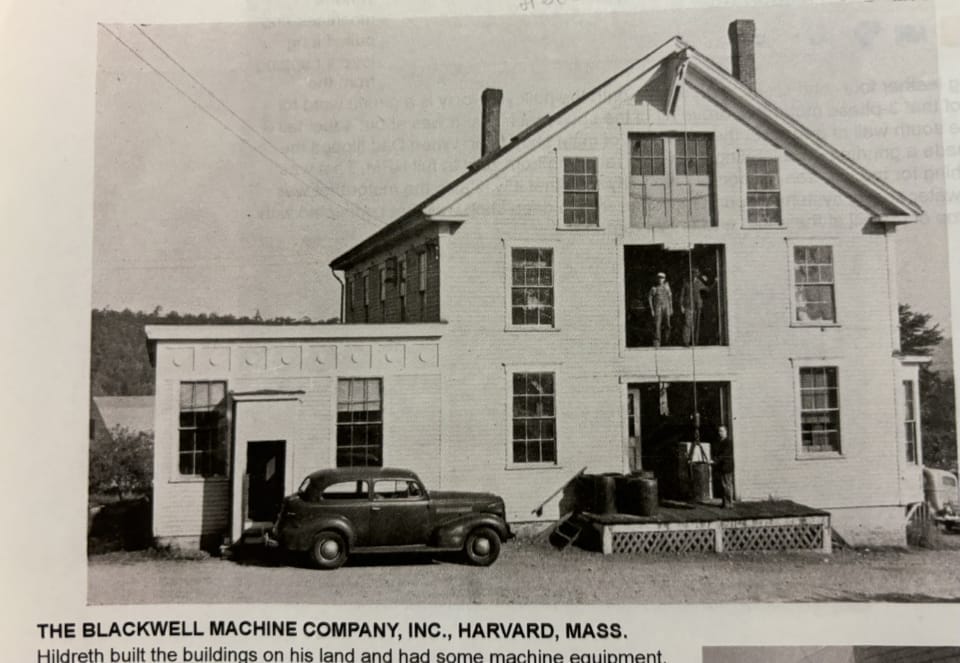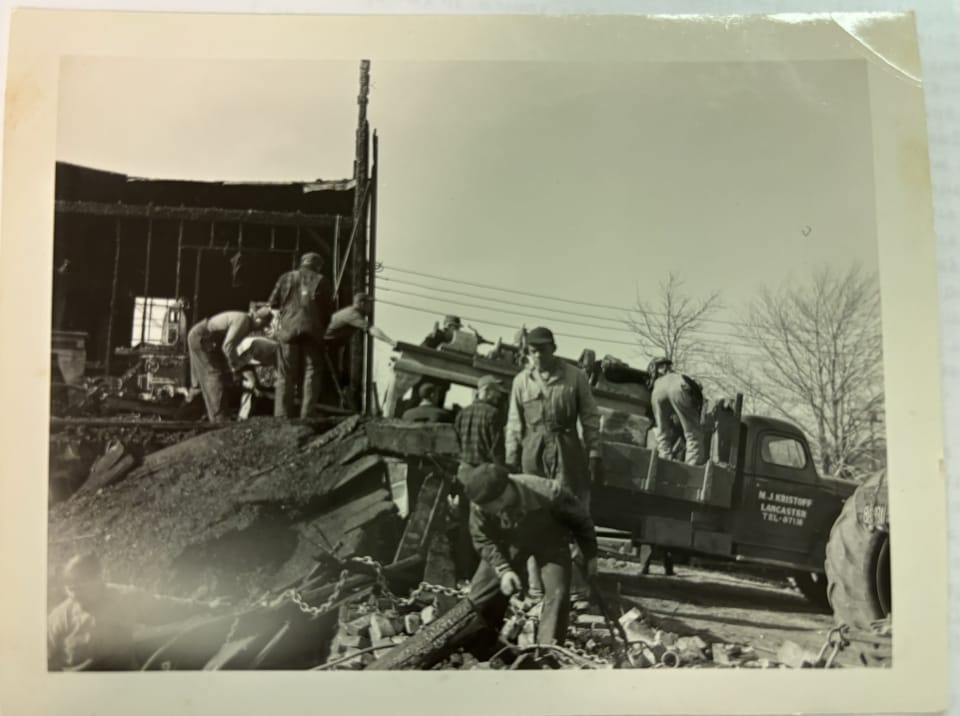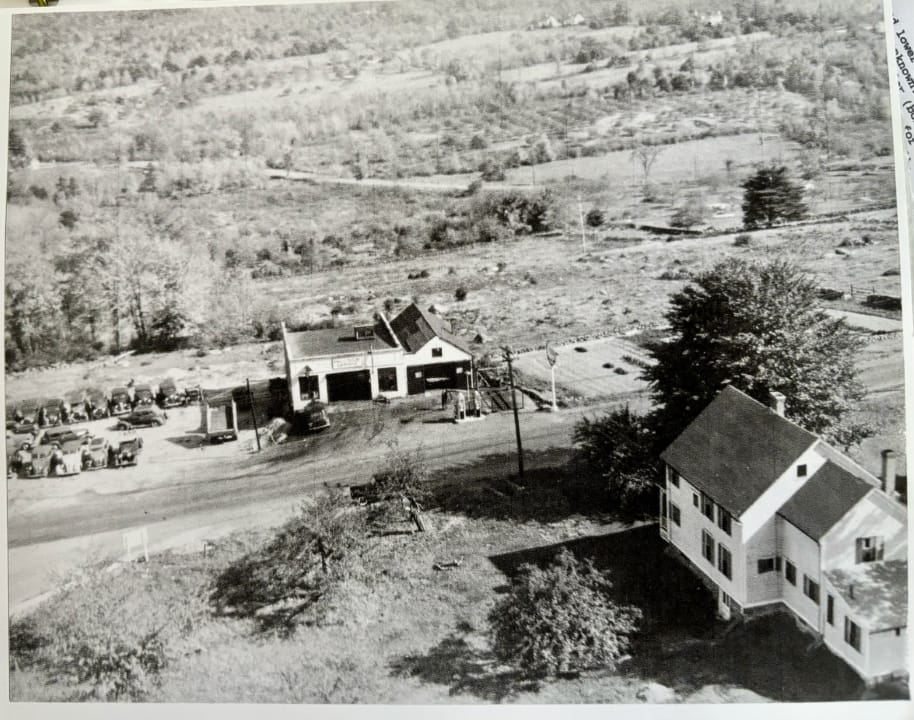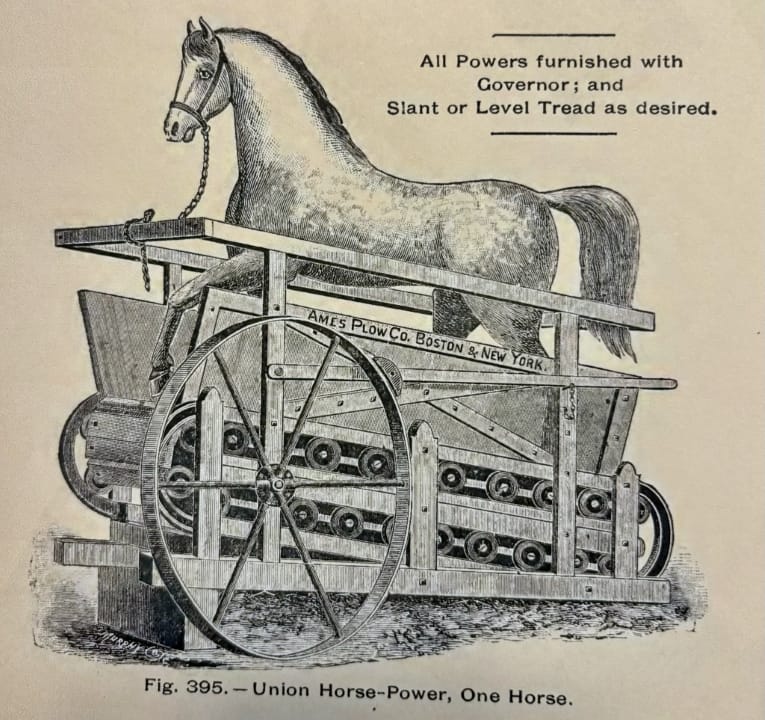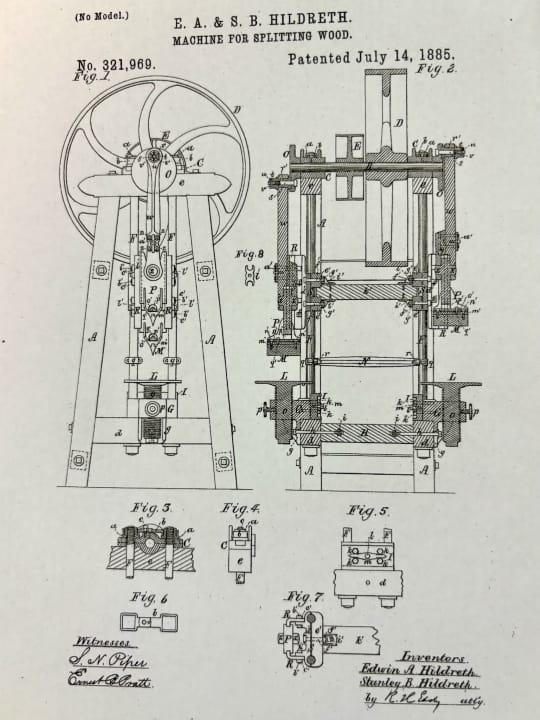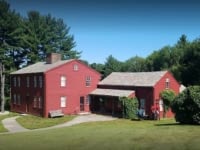Hildreth Inventions History
All are welcome to attend, a reception will follow the program.Was on
Thursday September 26, 2024
The most well known among all the inventors in Harvard’s history were the Hildreth brothers Edwin and Stanley, two of 10 children in the family. Virginia Hildreth, the great- granddaughter of Edwin, talks about her family and some of the other inventors who lived in Harvard, initially drawn by the water power, showing slides of her family and some of Hildreth Bros. numerous patented inventions.
Presentation pictures
Put the mouse on the pictures to see the caption. Click to enlarge.‘It was in the water;’ Harvard’s legacy of invention is topic of upcoming Historical Society talk
Harvard has a rich history of invention, and the most well known among the inventors in its past are the Hildreth brothers, Edwin A. and Stanley, two in a family of 10 children. Virginia Hildreth, the great-granddaughter of Edwin, will talk about her family and some of the other inventors who lived in Harvard Thursday, Sept. 26, at 7 p.m. at the Historical Society meetinghouse, 215 Still River Road. In her program, “Hildreth Inventions History,” Virginia will explore the Hildreth legacy, showing slides of her family and some of Hildreth Bros.’ numerous patented inventions.
I met with Virginia in her studio at 33 Ayer Road, the building where her mother ran the Barn School, starting in 1972. As she led me through to the back room, she referred to her studio as also a “repository for all things Hildreth,” the contents of three family homes of furniture, portraits, papers, and books. Amid these are several watercolors done by Virginia, an accomplished painter whose profession was art director for movies.
Moving back to her family home during the pandemic, Virginia said she was at first overwhelmed, but now that she has the time and the space, she is very much enjoying sorting through her family’s history and putting the pieces together. She has learned more about the Harvard and Hildreth legacies of inventors and inventions.
She had always known that her grandfather, Edwin A. Hildreth, and his brother Stanley were inventors, but she hadn’t realized how many other inventors there were in Harvard—“and are to this day.” Among the family papers, she found a talk her grandfather Horace had delivered to the Historical Society in 1937. He named and described the many inventors in the town’s history.
“It was in the water,” Virginia said, meaning it both literally and figuratively. It was water from Bowers Brook that was dammed up to create water power for small factories, and “inventors attract other inventors, like goes to like,” she said. It is her experience that Harvard continues to attract engineers and inventors.
Starting in the 1840s, George Burt, who had married a Hildreth, had a large house on the brook. He built a dam to harness the water power for his shop, where he invented farm machinery. His nephews Edwin A. and Stanley, after graduating with engineering degrees from Harvard, joined him in his work. To replace water power, they invented a system where a horse walks on a treadmill, turning a wheel to which other machinery is connected. As a horse-lover, Virginia said she felt sorry for the horse until she learned it rested at several intervals during its workout.
In 1880 Edwin and Stanley built a four-story machine shop, Hildreth Bros., which burned down in 1948, by which time it had been rented out. Virginia said it was located in front, to the east, of what is now her studio. It was the goal of their business to continue to invent and improve machines to make farming easier, she said. She has found documents with detailed drawings for patents, like the log splitter, some of which were filed, and some not.
She knows Harvard inventors talked to some of the Shakers. She remembers going for dinner with her great aunt Gladys and hearing her say that her dad (Edwin A.) had “talked shop with the Shakers,” who invented many machines that made items more efficiently than could be done by hand. But the Shakers never applied for patents. She said Burt improved on the circular saw invented by Shaker Sister Tabitha, making it a table saw.
Edwin A. built the house at 27 Ayer Road, and around 1900, Stanley built a home on the hilltop to the southwest of Edwin’s that is still called Hildreth House. He and his siblings Edwin and Emily did a lot for the town, including buying land for an elementary school. But beyond that, Stanley built a reservoir on Bolton Road and ran pipes to his property for a water system that he shared with town center. He oversaw improvements to the Common and for many years paid for its upkeep.
Stanley’s only child, Dorothy, remained in the house until her death, and it was sold to the town in 1979. The house was used by the Sixty-plus Club, as a senior center and Council on Aging offices, and now for town offices.
Virginia’s father was Edwin W., and she grew up “in the yellow house” at 27 Ayer Road and used to play in the large barn that in the late ’60s was converted to become her family home, and is now hers. Virginia calls it the “big green house-barn.”
Virginia made a trip to the Department of Public Works at the Transfer Station, where the Hildreth Bros. horse treadmill is stored in one of the buildings. It was donated to the Historical Society, but there is no room to house it there. Virginia said it’s a very impressive invention that she would love to see in a more appropriate place where more people could appreciate this important piece of the history of Harvard inventions.
Article by Carlene Philips published in the Harvard Press.
Copyright Harvard Press, LLC, 1 Still River Road, PO Box 1, Harvard, MA 01451, 2025.
This work is licensed under a Creative Commons Attribution-NonCommercial-NoDerivatives 4.0 International License
More Historical Society Events, past and present...



